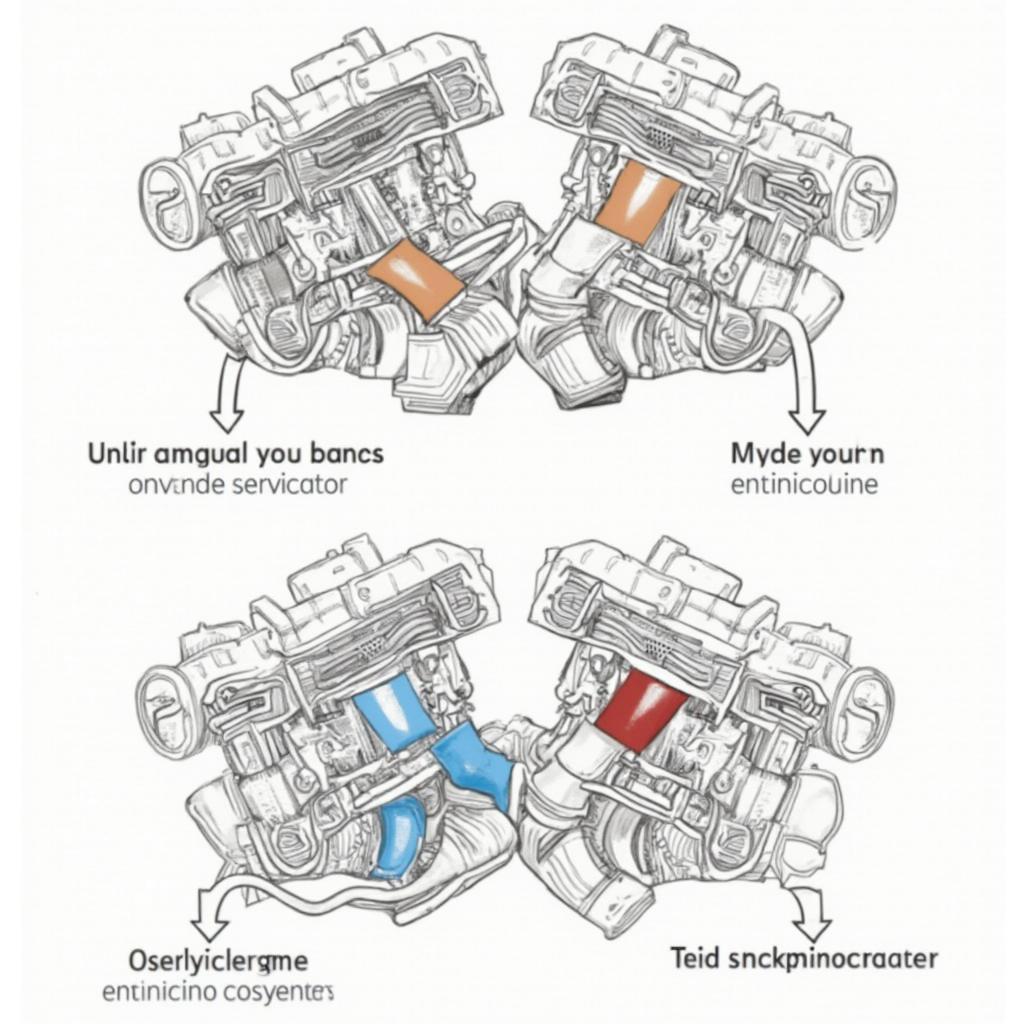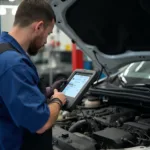The dreaded P0430. This obd2 error code p0430 indicates a problem with your vehicle’s catalytic converter system, specifically Bank 2. It can be a frustrating and potentially costly issue, but understanding what it means and its potential causes can help you navigate the repair process more effectively. This comprehensive guide will delve into everything you need to know about the P0430 code.
What Does OBD2 Error Code P0430 Mean?
The P0430 code specifically points to “Catalyst System Efficiency Below Threshold (Bank 2)”. “Bank 2” refers to the side of the engine that doesn’t contain cylinder #1. The catalytic converter’s job is to convert harmful exhaust gases into less harmful substances. The “efficiency below threshold” part means the oxygen sensors downstream of the catalytic converter are detecting a similar oxygen level to the upstream sensors, indicating the converter isn’t doing its job properly. This could mean your vehicle is emitting more pollutants than it should. What is obd2 code p0430? Simply put, it means your catalytic converter might need replacing.
Common Causes of P0430
Several issues can trigger the P0430 code. While a faulty catalytic converter is the most common culprit, it’s crucial to explore other possibilities before jumping to conclusions. A misdiagnosis can lead to unnecessary expenses. Here are some common culprits:
- Faulty Catalytic Converter: This is, unfortunately, the most likely cause. Over time, the internal honeycomb structure of the converter can become clogged or damaged, reducing its efficiency.
- Exhaust Leaks: Leaks in the exhaust system, particularly before the catalytic converter, can introduce excess oxygen, throwing off the sensor readings and triggering the P0430 code.
- Faulty Oxygen Sensors: A malfunctioning oxygen sensor (especially the downstream sensor) can provide incorrect readings to the engine control module (ECM), leading to a false P0430 code.
- Engine Misfires: Unburnt fuel from engine misfires can damage the catalytic converter, leading to reduced efficiency.
- Rich Fuel Mixture: A consistently rich fuel mixture can overload the catalytic converter, leading to premature failure.
How to Diagnose and Fix P0430
Diagnosing the P0430 code requires a systematic approach. Here’s a step-by-step guide:
- Check for other codes: Sometimes, other codes, such as misfire codes, can indirectly cause the P0430. Address these first.
- Inspect for exhaust leaks: Thoroughly examine the exhaust system for any leaks, paying close attention to the area before the catalytic converter.
- Test the oxygen sensors: Use an obd2 scanner p0420 or multimeter to check the oxygen sensor readings. Compare the upstream and downstream sensor data to identify potential sensor issues.
- Check the catalytic converter: Inspect the converter for physical damage or signs of overheating. You can also perform a backpressure test to assess the converter’s condition.
What Happens if You Ignore P0430?
Ignoring the P0430 code can lead to further damage and increased repair costs. The catalytic converter might fail completely, resulting in a loss of power, failed emissions tests, and potential damage to other engine components.
P0430 vs. P0420: What’s the Difference?
While both codes relate to catalyst system efficiency, the P0430 specifically refers to Bank 2, while P0420 indicates a problem with Bank 1. Understanding this distinction is crucial for accurate diagnosis and repair. chevy obd2 po430 owners frequently encounter this code.
 P0430 vs. P0420: Engine Banks
P0430 vs. P0420: Engine Banks
Conclusion
The obd2 error code p0430 signals a potential problem with your vehicle’s catalytic converter system. Addressing this issue promptly can prevent further damage and costly repairs. By understanding the code, its causes, and the diagnostic process, you can take the necessary steps to ensure your vehicle runs efficiently and remains environmentally friendly.
FAQ
- Can I drive with a P0430 code? You can drive for a short period, but it’s best to address the issue as soon as possible.
- How much does it cost to fix P0430? The cost varies depending on the cause and your vehicle, but replacing a catalytic converter can be expensive.
- Can a bad oxygen sensor cause P0430? Yes, a faulty oxygen sensor can trigger the P0430 code.
- Will a P0430 cause my car to fail emissions? Yes, a faulty catalytic converter will likely lead to a failed emissions test.
- Can I fix P0430 myself? Diagnosing and replacing components like oxygen sensors can be done with some mechanical skills, but replacing a catalytic converter is best left to professionals.
- What are the symptoms of a P0430 code? You may notice a decrease in fuel economy, a sulfur-like smell, or the check engine light illuminating.
- How can I prevent the P0430 code from recurring? Regular maintenance, addressing engine misfires promptly, and using quality fuel can help prevent catalytic converter problems.
Common Scenarios for P0430
- Scenario 1: Your Check Engine light turns on, and you scan your car and find a P0430 code.
- Scenario 2: You notice a decrease in fuel economy and a rotten egg smell from your exhaust.
- Scenario 3: Your car fails an emissions test.
Related Articles
For assistance, contact us via WhatsApp: +1(641)206-8880, Email: [email protected] or visit us at 789 Elm Street, San Francisco, CA 94102, USA. Our customer support team is available 24/7.
